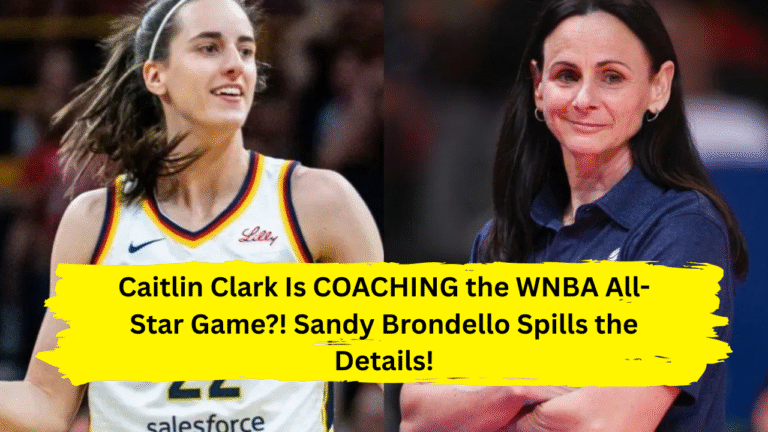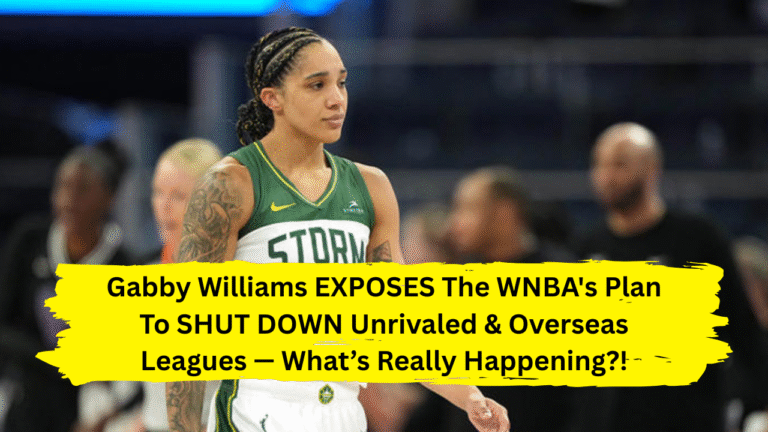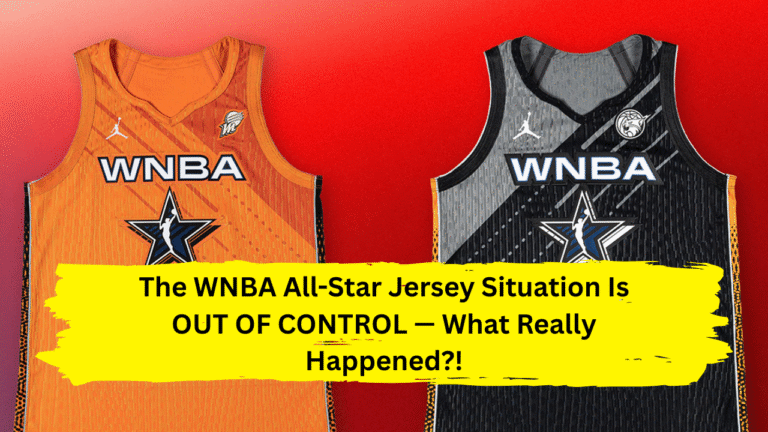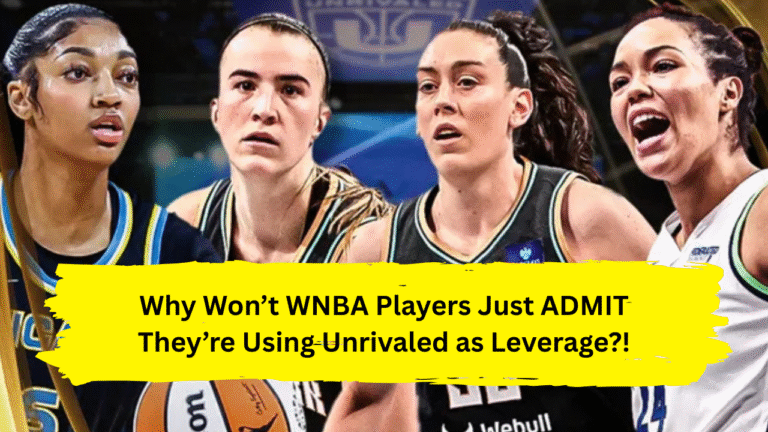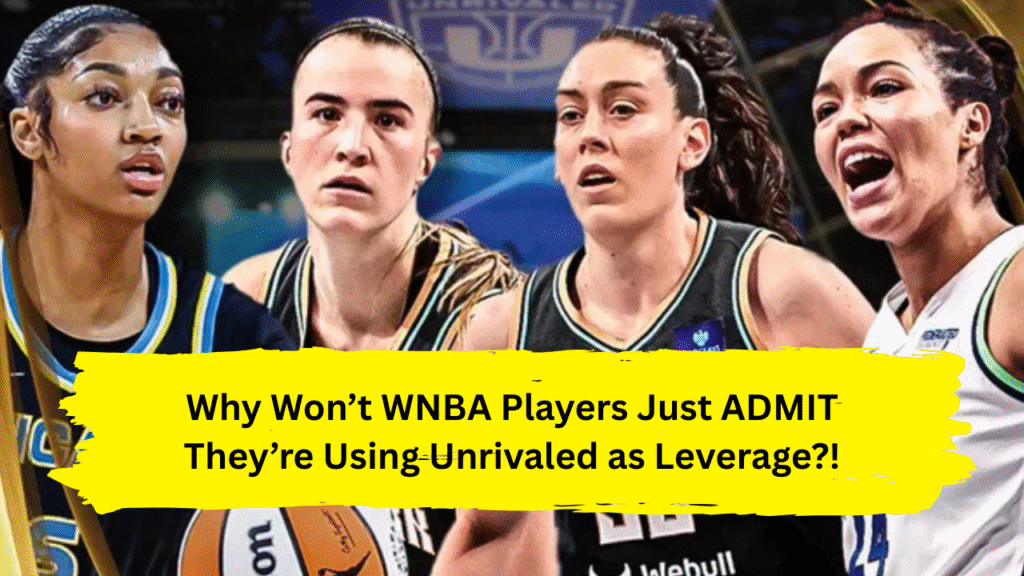
Introduction: The CBA Chess Game No One Wants to Talk About
Let’s be real for a second: the WNBA and its players are locked in a tense standoff over the next Collective Bargaining Agreement (CBA), and Unrivaled — the new women’s league — is the unexpected queen on the chessboard. Yet for some reason, nobody in the league wants to openly admit that players are using Unrivaled as leverage.
The awkward tiptoeing, mixed messages, and sudden media pivots? It’s getting weird. So let’s break down why this is happening, what it means for the league, and whether or not this “conflict of interest” is even that big of a deal.
What Is Unrivaled, Anyway?
In case you’re out of the loop, Unrivaled is a new women’s basketball league founded by players like Napheesa Collier and Breanna Stewart. It promises shorter seasons, better media visibility, higher pay, and a player-focused structure. Basically, it’s the dream version of what many believe the WNBA should be.
You can read more on the league at the official WNBA website — which ironically doesn’t even mention Unrivaled (yet…).
So… Are Players Using It as Leverage?
Short answer: yes.
Long answer: absolutely, but they don’t want to say that out loud.
Players like Stewart and Collier — both deeply involved in Unrivaled — have made statements that both deny and acknowledge using the league as a bargaining chip in CBA talks.
In one breath, they’ll say “Unrivaled isn’t a threat to the WNBA.”
In the next, they’ll praise its infrastructure, exposure, and potential — all while pointing out how the WNBA falls short in those same areas.
Hmm.
Conflict of Interest… or Common Sense?
Critics have raised the obvious question: is it a conflict of interest for players who are co-founders of a rival league to negotiate with the WNBA?
Here’s the thing:
- Yes, technically it can be seen as a conflict.
- But also, why wouldn’t players use every available tool to improve their pay and conditions?
Unrivaled offers an alternative. The mere existence of that alternative shifts the power dynamic, even if subtly. And guess what? That’s how leverage works.
Breanna Stewart Said It Herself
In a recent interview, Stewart pointed out how Unrivaled is “setting a new standard” and how much players love the infrastructure, media coverage, and the opportunity to build something player-led.
But also… “It’s not a conflict of interest.”
That’s like a chef saying they didn’t steal the recipe, just “took inspiration” while cooking in someone else’s kitchen.
Let’s Talk Strategy — Not Shame
Here’s what no one’s saying out loud but absolutely should:
Using Unrivaled as a bargaining chip isn’t wrong. It’s smart.
In fact, the only thing that looks bad is the insistence that it isn’t being used that way — when all signs point to the opposite.
Imagine being in a job negotiation and saying, “No, I’m not even considering that higher-paying offer across the street.” Everyone knows you are. You’re supposed to.
Why the Silence Then?
Here’s why players and reps are hesitant to openly say they’re leveraging Unrivaled:
- PR optics: It’s not a great look to undermine the league you’re currently negotiating with.
- Media cycles: Anything said gets twisted online in five seconds or less.
- Fan backlash: Some fans see this as disloyalty or unnecessary drama.
- Power dynamics: The league could punish or isolate vocal players if they see it as undermining WNBA unity.
Still, players don’t owe fans silence when their careers are on the line.
Unrivaled Is Raising the Bar — And That’s a Good Thing
Let’s get one thing clear: Unrivaled’s existence is already pushing the WNBA to be better.
From player treatment to media coverage to pay transparency, there’s no denying the pressure Unrivaled is putting on the system — and that’s a win for everyone, even if it feels uncomfortable right now.
If anything, the WNBA should be paying attention, not panicking.
What’s the Endgame Here?
A lockout is the nuclear option — no one wants that. Not the players, not the league, and definitely not the fans.
But don’t be surprised if the CBA includes new rules around outside leagues, offseason participation, or branding rights. The WNBA wants control, but players now have options. And those options are only growing.
Reality Check: Not All Players Are Caitlin Clark
Let’s be honest. Clark makes millions in endorsements. But the average WNBA player? Not so lucky.
Some veterans earn more playing for Turkish or Russian teams than they do stateside. And Unrivaled is offering mid-level stars a path to make money and stay local, something the WNBA still struggles with.
If you’re a player making under $100K, you bet you’re thinking about leveraging any platform that can increase your value.
Stop Calling It Scandalous. It’s Just Smart Business.
The narrative that using Unrivaled for leverage is shady or disloyal is completely off-base. This is professional sports, not high school drama.
The real problem? The WNBA is being forced to compete — and it’s clearly uncomfortable doing so. But discomfort often leads to growth. And right now, that’s exactly what women’s basketball needs.
Conclusion: Call It What It Is — Leverage
It’s time to stop dancing around the truth.
Yes, Unrivaled is being used as leverage in the WNBA CBA talks.
Yes, there is a mild conflict of interest.
No, that’s not a bad thing.
If the WNBA wants to keep its best players from walking, it needs to step up — and Unrivaled is helping make that happen. Let’s stop pretending this is some scandal, and start celebrating a moment of real player empowerment.
FAQs
1. What is Unrivaled and why is it controversial?
Unrivaled is a new women’s pro league created by players like Napheesa Collier and Breanna Stewart. It’s controversial because those same players are also involved in negotiating the WNBA’s CBA.
2. Are players using Unrivaled as leverage in negotiations?
Yes — whether they say it directly or not, Unrivaled is clearly being used to push for better conditions in the WNBA.
3. Is this a conflict of interest?
Some argue yes. Others argue it’s just strategic business. Either way, it’s not illegal or unethical.
4. Will this lead to a WNBA lockout?
It’s too early to say, but both sides seem motivated to avoid that outcome.
5. Does the WNBA have a plan to respond?
The league hasn’t shared public strategies, but you can stay updated via the official WNBA website.
Also Read: Latest Trending News

